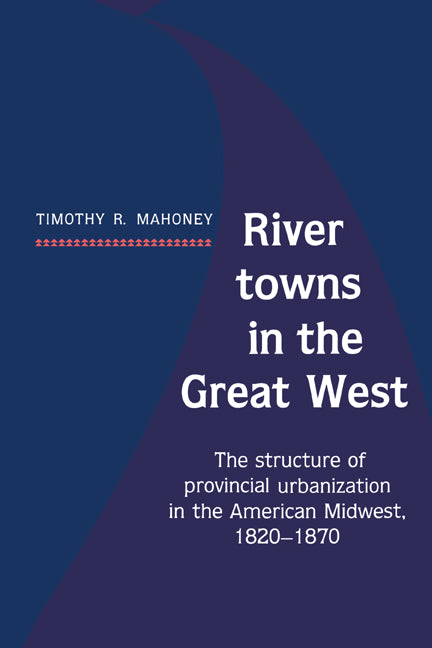Freshly Printed - allow 8 days lead
Couldn't load pickup availability
River Towns in the Great West
The Structure of Provincial Urbanization in the American Midwest, 1820–1870
This book analyzes the development of a distinctive, region along the upper Mississippi River north of St. Louis during the middle third of the nineteenth century.
Timothy R. Mahoney (Author)
9780521530620, Cambridge University Press
Paperback, published 13 February 2003
332 pages
23 x 15.3 x 2.3 cm, 0.484 kg
"Timothy R. Mahoney makes a significant contribution...with his interesting and assiduously researched study of town development in the upper Mississippi Valley. By focusing on a regional system, Mahoney extends his analysis beyond the limitations he associates with local history and with urban biography. The result is a sophisticated interpretation of how regional forces shaped the development of river towns....An innovative, perceptive, and persuasive analysis of the rise and fall of river towns in the West." The Journal of American History
This book analyzes, with unprecedented breadth and coverage, the development, maturation, growth, and sudden decline of a distinctive, regional urban economic system that developed along the upper Mississippi River north of St. Louis during the middle third of the nineteenth century. Between 1820 and the Civil War the upper Mississippi River valley was at the center of national and international attention. At the edge of the northern frontier, this area, known as 'The Great West,' was the destination of hundreds of thousands of immigrants from the East and from northern Europe. To many, its rich lands, temperate climate, and vast rivers offered an opportunity to establish a better life, as well as a chance to enter, if desired, the mainstream of American life. Drawing from a variety of methods used in historical geography, economic history, systems analysis, and social and urban history, Timothy Mahoney analyzes how early settlement patterns were affected by experience, climate, and geography and how they, in turn, shaped the initial patterns of economic, urban, and transportation development.
List of figures and tables
Acknowledgments
Part I. Human Geography and the Structure of Regional Life: 1. Introduction and 'topographical description'
2. The land takes shape: the process of settlement
3. Encountering the rivers
Part II. The Human System: 4. Towns, roads, steamboat routes, and the development of a regional system
5. The system takes shape: an economic geography
6. The structure of the regional economy
Part III. The Regional Urban System: 7. The currents of trade and regional urbanization
8. Town and system: local history in a regional context
Epilogue
Appendixes
Index.
Subject Areas: Modern history to 20th century: c 1700 to c 1900 [HBLL], History of the Americas [HBJK]


